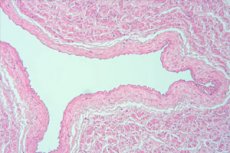Nye publikasjoner
Kardiomyocyttforskning avslører en ny måte å regenerere skadede hjerteceller på
Sist anmeldt: 30.06.2025

Alt iLive-innhold blir gjennomgått med medisin eller faktisk kontrollert for å sikre så mye faktuell nøyaktighet som mulig.
Vi har strenge retningslinjer for innkjøp og kun kobling til anerkjente medieområder, akademiske forskningsinstitusjoner og, når det er mulig, medisinsk peer-evaluerte studier. Merk at tallene i parenteser ([1], [2], etc.) er klikkbare koblinger til disse studiene.
Hvis du føler at noe av innholdet vårt er unøyaktig, utdatert eller ellers tvilsomt, velg det og trykk Ctrl + Enter.

Forskere ved Northwestern Medicine har oppdaget en måte å regenerere skadede hjertemuskelceller hos mus, noe som kan åpne en ny vei for behandling av medfødte hjertefeil hos barn og hjerteskade etter hjerteinfarkt hos voksne, ifølge en studie publisert i Journal of Clinical Investigation.
Hypoplastisk venstre hjertesyndrom (HLHS) er en sjelden medfødt hjertefeil som oppstår når venstre side av et barns hjerte ikke utvikler seg ordentlig under graviditet, ifølge Ann & Robert H. Lurie Children's Hospital i Chicago. Tilstanden rammer én av 5000 nyfødte og er ansvarlig for 23 % av dødsfall forårsaket av hjertesykdom i løpet av den første uken av livet.
Kardiomyocytter, cellene som er ansvarlige for å trekke sammen hjertemuskelen, kan regenerere seg hos nyfødte pattedyr, men mister denne evnen med alderen, sa Paul Shumaker, PhD, professor i pediatri ved avdelingen for neonatologi og seniorforfatter av studien.
«Ved fødselen kan hjertemuskelceller fortsatt gjennomgå mitotisk deling», sa Shumaker. «For eksempel, hvis hjertet til en nyfødt mus blir skadet når den er én eller to dager gammel, og du venter til musen er voksen, vil du aldri vite at det var en skade der når du ser på det skadde området av hjertet.»
I den nåværende studien forsøkte Shumaker og kolleger å forstå om voksne pattedyrkardiomyocytter kunne gå tilbake til fosterets regenerative tilstand.
Fordi føtale kardiomyocytter overlever på glukose i stedet for å generere cellulær energi gjennom mitokondriene sine, slettet Shumaker og kolleger et mitokondrie-relatert gen, UQCRFS1, i hjertene til voksne mus, noe som fikk dem til å gå tilbake til en føtallignende tilstand.
Hos voksne mus med skadet hjertevev observerte forskerne at hjertecellene begynte å regenerere seg etter at UQCRFS1 ble hemmet. Cellene begynte også å forbruke mer glukose, på samme måte som fosterhjerteceller fungerer, ifølge studien.
Studiens funn tyder på at økt glukoseforbruk også kan gjenopprette celledeling og vekst i voksne hjerteceller og kan gi en ny vei for behandling av skadede hjerteceller, sa Shumaker.
«Dette er det første skrittet mot å løse et av de viktigste spørsmålene innen kardiologi: Hvordan får vi hjerteceller til å dele seg igjen slik at vi kan reparere hjerter?» sa Shumaker, som også er professor i celle- og utviklingsbiologi og medisin ved Avdeling for lunge- og intensivbehandling.
Basert på denne oppdagelsen vil Shumaker og kollegene hans fokusere på å identifisere legemidler som kan utløse denne responsen i hjerteceller uten genetisk modifisering.
«Hvis vi kan finne et legemiddel som aktiverer denne responsen på samme måte som genetisk modifisering, kan vi stoppe legemidlet når hjertecellene har vokst», sa Shumaker. «Når det gjelder barn med HLHS, kan dette gjøre det mulig for oss å gjenopprette normal veggtykkelse i venstre ventrikkel. Det ville være livreddende.»
Tilnærmingen kan også brukes for voksne som har hatt hjerteinfarkt, sa Shumaker.
«Dette var et stort prosjekt, og jeg er takknemlig for alle involverte», sa Shumaker. «Artikkelen lister opp 15 fakultetsmedlemmer fra Northwestern som medforfattere, så det var virkelig en laginnsats.»
